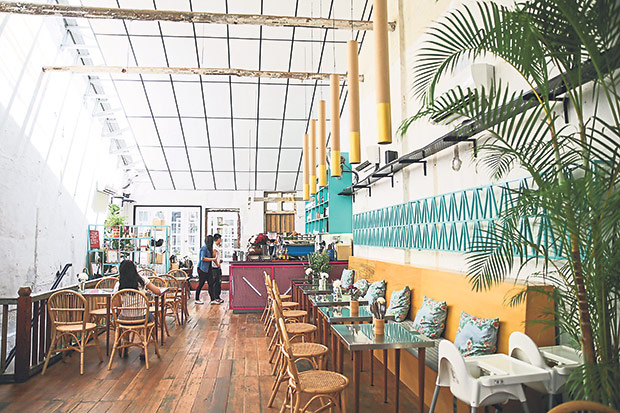KUALA LUMPUR, Nov 15 — Imagine walking up a staircase lit by red lights. You enter a room alive with mementos of yesteryear; from Peranakan cushions to paintings of peonies.
There is a hanging walkway amongst trees.
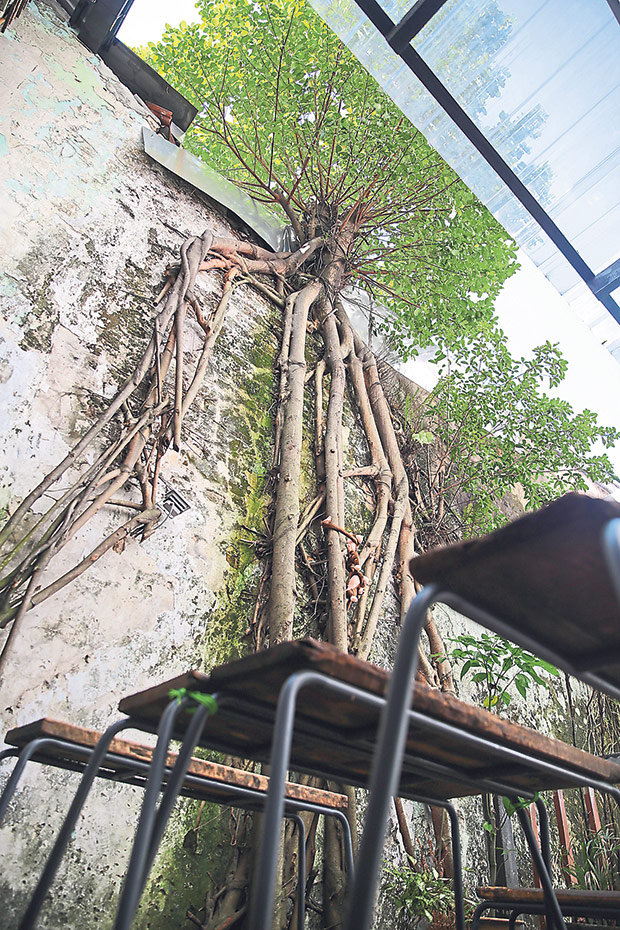
The walls are peeling, the layers of paint and time each telling a story. Seriously, it’s like a scene from Wong Kar-Wai’s In the Mood for Love, and indeed, this used to be a brothel. Today it’s the latest brunch haven on Petaling Street.
Welcome to Merchant’s Lane.
Located next door to Advance Tertiary College (ATC), the café takes up the entire first floor of a Petaling Street shophouse. Co-founder Ken Ho describes Merchant’s Lane’s design philosophy as “maintaining as much of the original structure and appearance as possible. We want it to showcase the heritage while having a modern facelift of sorts.”

Ken grew up in the Petaling Steet area as his father runs a leather shop here. He says, “I was working in the finance industry in Hong Kong when I got tired of the rat race and returned to KL. I had my first taste of the café business when I opened Butter + Beans in Taman OUG last year. But I’ve always wanted to open a café in Petaling Street.”
Therefore it was a no-brainer decision for the young entrepreneur when he heard the shophouse was available for lease in March this year. “It was a bit of luck actually. The stationery shop below my father’s shop had moved to this building, occupying the ground floor, and the owners mentioned it to him. My father told me and once I found out the landlord was still looking for a tenant for the first floor, I leapt at the opportunity.”

Ken roped in barista Kenneth Tan as his co-founder in this venture. A business major, Kenneth had earned his stripes working as a barista at Standing Theory and later Butter + Beans in Taman OUG. He says, “I was very excited when Ken told me about the space due to its history. It used to be a brothel in the 1980s and later became a hostel renting rooms out to immigrant workers.”
The shophouse had been abandoned for five years, like many other old buildings in the area. Kenneth says, “This is perhaps due to landlords in the area balking at the cost of refurbishing these old shophouses. When we took it over, we knew the space desperately needed a makeover but we didn’t have a large budget for designers or architects either.”
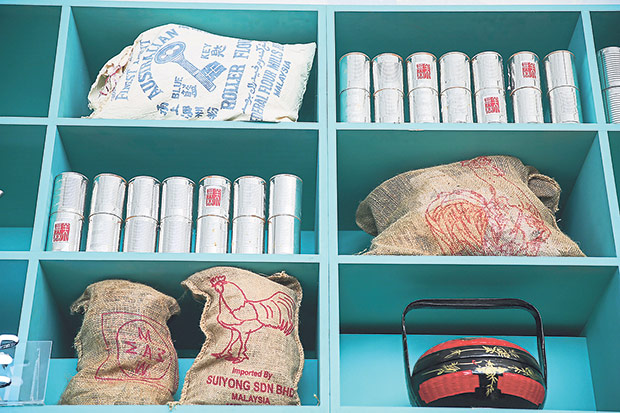
Serendipitously, the affable barista was sharing this dilemma with a friend at Butter + Beans OUG when their conversation was overheard... by an architect. The architect, Jun Ong, had dropped by the café while having his car repaired in the neighbourhood and couldn’t resist introducing himself.
“I was interested in the idea of a café project at the time so this was perfect,” says Jun. “At the same time, I was reconnecting with a senior of mine from college, Kyle E. We had collaborated on the non-profit EPIC Homes project to build houses for Orang Asli families and wanted to work on another project together.”
Trained as an architect and a designer at heart, Kyle has also worked with local landscape architect Ng Seksan before. Kyle says, “One thing I learned is to use creativity to solve all challenges, which, in this case, was the budget. The solution was to change as little as possible, thereby limiting the renovation costs while allowing the aged beauty of the shophouse to shine through.”

Due to water damage from a previously leaking roof (now fixed), the floorboards had to be changed; the feel of the original was retained by replacing these with rescued wood that was aged but in good condition.
A narrow walkway linking the front to the back was reinforced; one side was covered with a grating to form a sunny patio with two trees growing through it. On the other side, there are creeping plants and roots aplenty on the wall.

Before the restoration, there were fluorescent lights spray painted pink everywhere, a nod to the profession of the former occupants. Kenneth recalls, “There were concrete sinks on the floors of the tiny rooms for the patrons and prostitutes to wash up before and after. One of our contractors even remembers the heyday of this place. He used to visit when he was only 18; he’s in his 50s now.”
It was apparently called Nan Tong (“Southern Connection” in Cantonese) in those days. Jun shares, “As it was a popular brothel, there was this tradition of putting out birdcages downstairs along the five-foot walkway. Different birds denoted different ladies; you checked the birdcages outside to see if the lady you wanted was available.”
Despite its dilapidated state before renovations, the four young men could see the potential in the high ceilings and a central “hanging courtyard” with trees. Ken says, “It was a rare opportunity to create a café that didn’t look too typical. In fact, my brief to Jun and Kyle was more of a list of what we didn’t want than what we wanted: No concrete tops, no exposed light bulbs, no industrial ambience, etc. The only real instruction we had was ‘Please make it Instagram-able.’”
And “Instagram-able” it is: nestled in every corner is another reminder of the Petaling Street of yore — from traditional abacus to ang koo kueh moulds, old school Chinese calendars to boxes of festival candles.
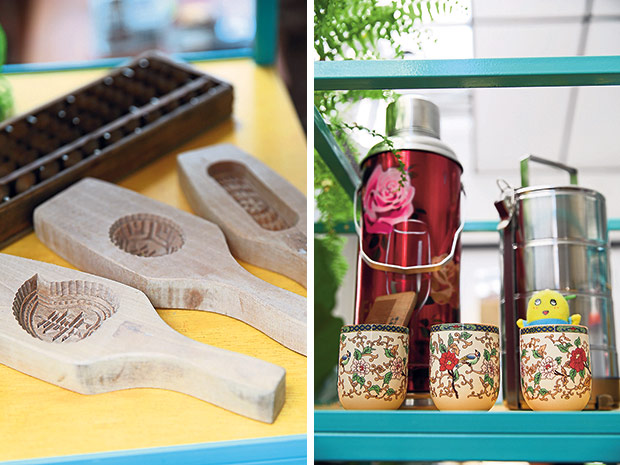
Tiffin carriers and dim sum bamboo baskets share shelf space with a chamber pot reincarnated as a plant container. There are even volumes upon volumes of vintage acupuncture manuals!
Most of the paraphernalia are the results of “treasure hunts” by Jun and Kyle in the latter’s hometown of Malacca. Kyle says, “We got almost everything there, including the lampshades, rattan chairs and fabrics. Besides Jonker Street, we also sourced from lesser-known antique areas such as Kota Laksamana and Bachang.”

Ultimately, the designers consider the final design “Malaysian Oriental” — a mix of Malaysian Chinese and Peranakan influences. Jun says, “Our theme colours are fuchsia and teal. The coffee bar is wrapped with a fuchsia frame and has teal-coloured shelves behind it. The tables have metal frames painted fuchsia while the tops are made from old wooden doors recovered from a junkyard in Kuala Selangor.”
The Malaysian Oriental motif even extends to their brunch-friendly menu. Their signature Merchant’s Waffles are served with ice-cream of your choice — Earl Grey, vanilla, kaya toast or pandan coconut passionfruit — and gula Melaka bits.

Pasta lovers may try their Italian chow mein: here, the conventional spaghetti aglio olio is spruced up with Asian chilli flakes (instead of the classic peperoncini) and spicy chicken rendang.
Beverages here follow a similar concept. From hand-crafted tea (charcoal-roasted oolong blended with cinnamon and chrysanthemum) to an Americano infused with the floral notes of jasmine, every sip promises to be a taste of East-meets-West. Their version of cham, that kopitiam favourite, pairs espresso with Earl Grey ice-cream.
This floral trend continues inside the “rainbow room” beyond the hanging walkway. Here two large paintings of flowers — chrysanthemums and peonies — dominate the space.
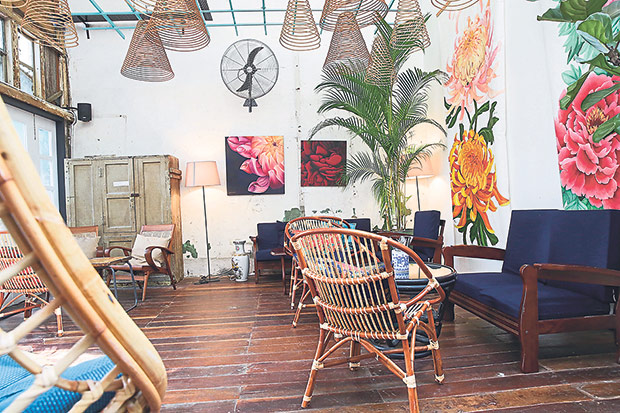
According to Kenneth, these were painted by Ivy and Annie, two art students from One Academy. “We feel the paintings add to the brothel theme, along with chicken illustrations on gunny sacks. Ladies of the night were known as ‘flowers’ too.
Chickens, of course, are another moniker for prostitutes in Chinese dialects.”
He grins, adding, “We love visual puns.”
There are smaller pieces of art by local artists on rotation; currently Merchant’s Lane features work by Sharifah Bahiyah. These depict more flowers, such as lilies, in line with the overall ambience of the café.
Much of the décor is a result of chipping away at the building’s past. Kyle recalls scraping away layers of paint from the walls to reveal different coats. “The years are reflected in each layer, and I even found an old advertisement pasted on one of the walls. It’s either for matchboxes or cigarettes; we are still arguing which it is!”
“We get a lot of joy from creating a café full of different ‘original’ colours,” says Ken. “We’re trying to keep as much of the past here while adding some modern touches.”
Kyle quips, “One of my architecture mentors used to say that an old lady should never dress like a young woman, and likewise our approach for buildings. We’re updating and cleaning it up a bit, but not so much that nothing of its history is left.”
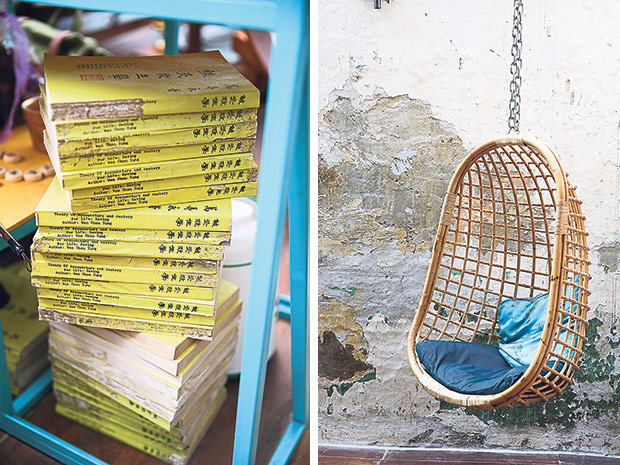
Indeed, by retaining much of this Petaling Street shophouse’s history, the quartet has allowed generations old and new to recall its former glory days and share fresh stories.
As I walk down the stairs, I observe there is no signboard. Nothing to indicate where the café is. Is Merchant’s Lane meant to be a sort of secret destination only for those in the know?
The boys laugh in unison. Ken explains, “Not at all. We just didn’t have the budget for a signboard. Anyway, most customers park at the open air car park opposite us. The parking attendants will tell them ‘Itu pintu hijau’ (‘The one with the green door’) so they know where to go.”
And how do parking attendants know these are customers headed to the café?
“Oh, we wondered about that too,” says Kenneth. “We asked and they told us our customers are the only ones dressed like hipsters in Petaling Street...”
Merchant’s Lane
First floor, 150 Jalan Petaling, Kuala Lumpur
Open daily 10:30am-8pm
Tel: 03-2022 1736
Facebook: Merchant’s Lane
POW!
Jun and Kyle now run POW!, an architecture-design firm. For more information, visit www.facebook.com/powideas/
















